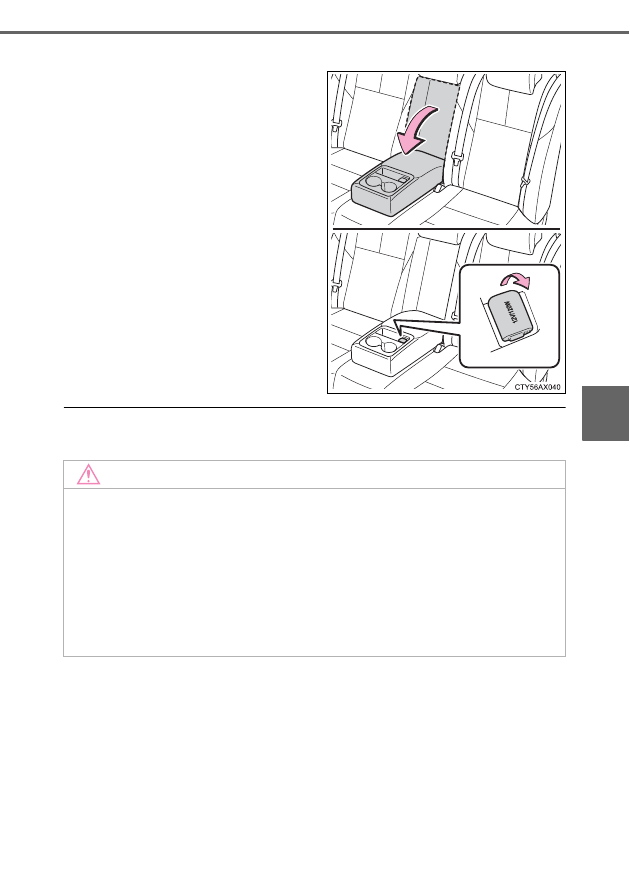Toyota Avalon (2018 year). Manual - part 19

289
5-4. Other interior features
5
In
te
rior fe
atures
■
Rear armrest (if equipped)
■
The power outlets can be used when
The engine switch is in ACCESSORY or IGNITION ON mode.
NOTICE
●
To avoid damaging the power outlets, close the power outlet lids when the
power outlets are not in use.
Foreign objects or liquids that enter the power outlets may cause a short
circuit.
●
To prevent blown fuse, do not use an accessory that uses more than 12 V
10 A.
●
To prevent battery discharge, do not use the power outlets longer than
necessary when the engine is off.